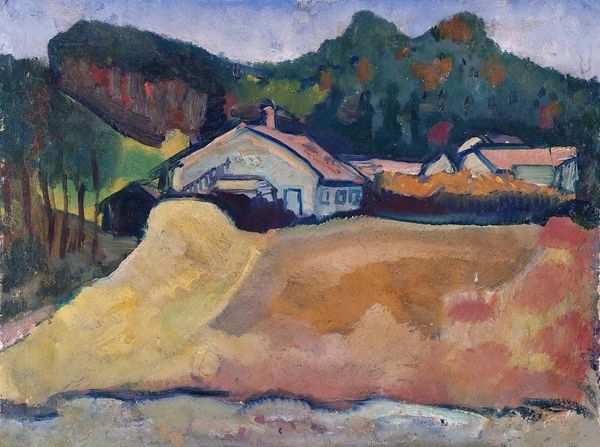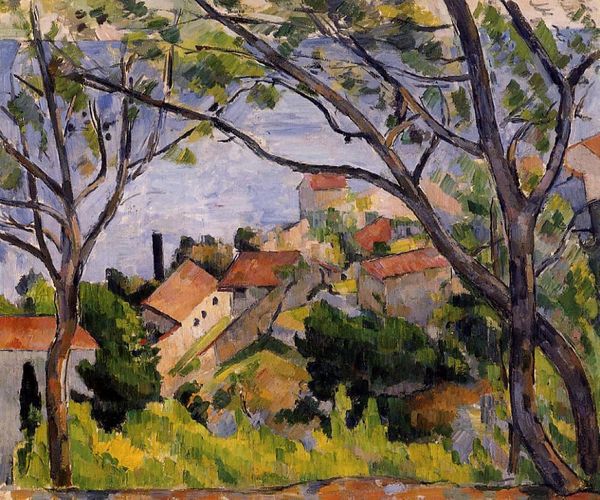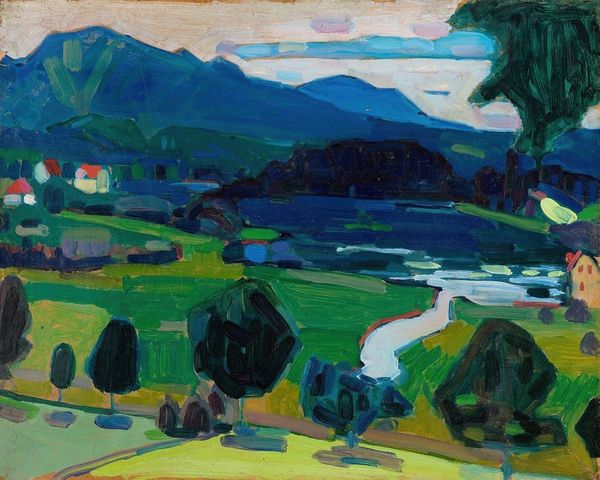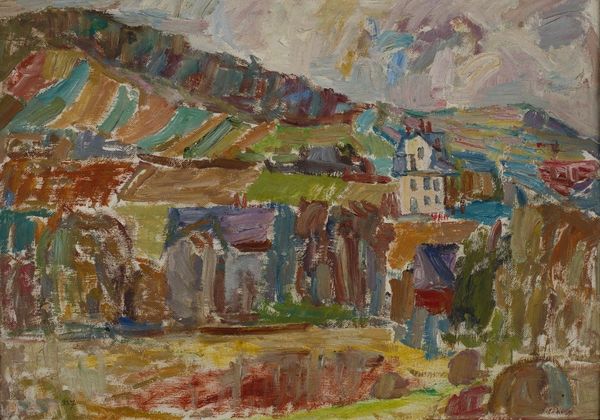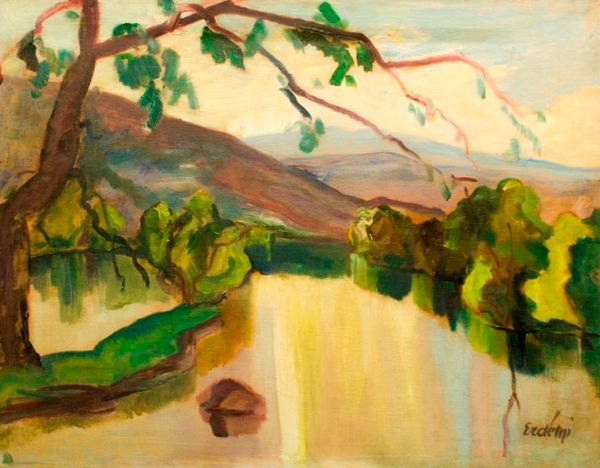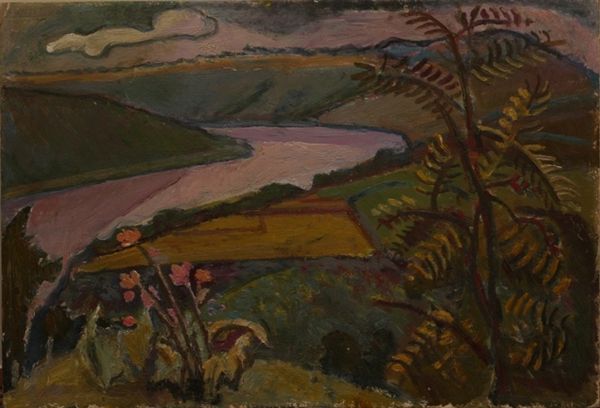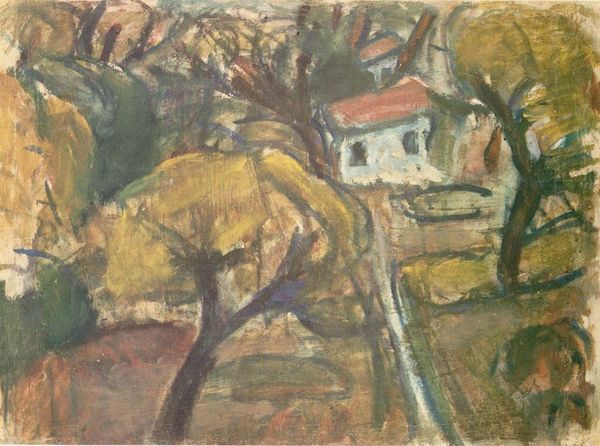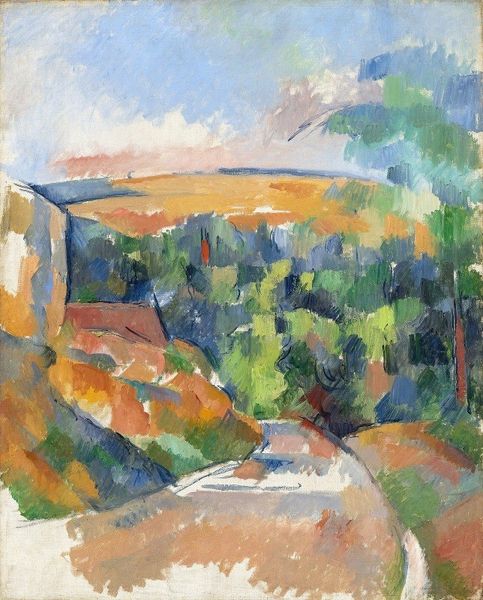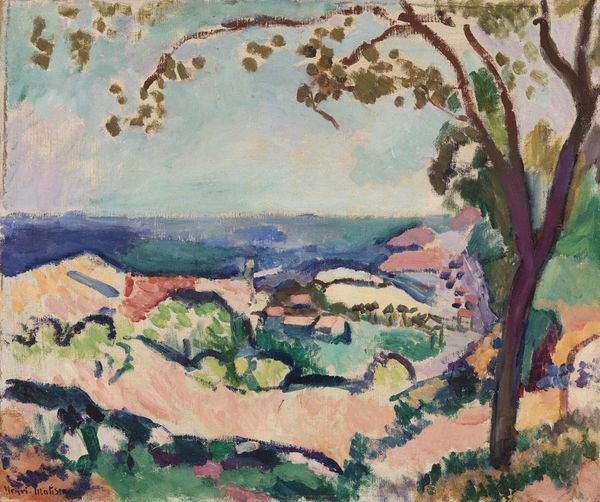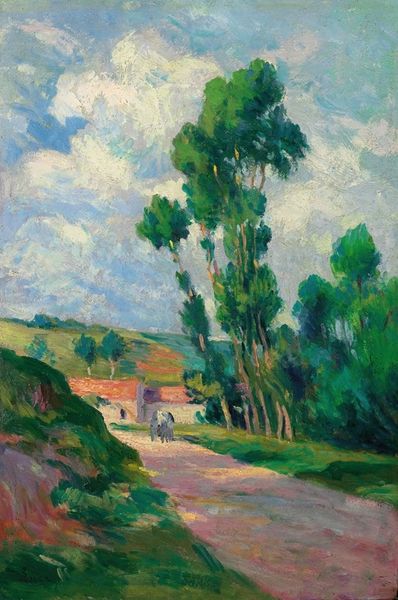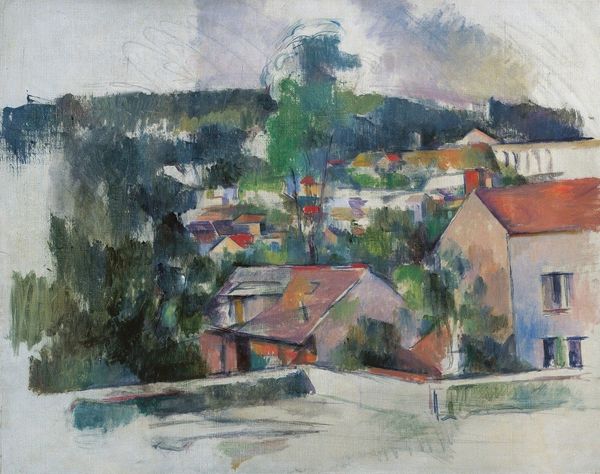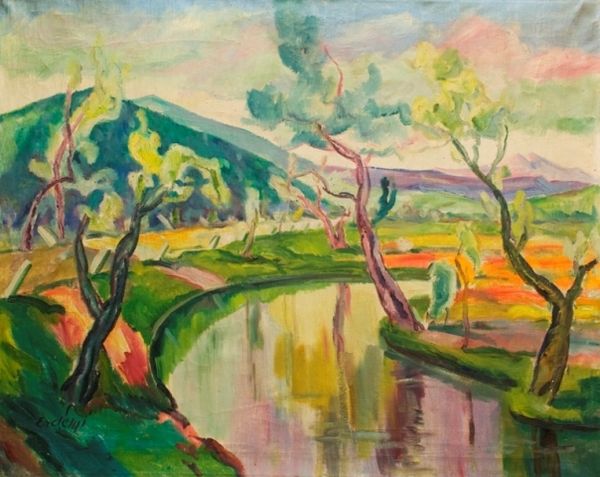
Copyright: Public domain US
Editor: We’re looking at “Red Rooftops near Marnat,” painted by Émilie Charmy in 1916 using oil paint. The colors are so vibrant and expressive; the whole scene seems to breathe. What strikes you most about this work? Curator: The date is crucial. 1916—right in the middle of the First World War. While much of Europe was engulfed in conflict and grappling with monumental shifts in societal structures, Charmy painted this seemingly tranquil landscape. Doesn't it prompt you to wonder if this represents an escape, a deliberate choice to focus on the enduring beauty of the natural world amid such devastation? Editor: Absolutely, it does feel like an intentional turning away. Were women artists at this time generally expected or encouraged to create work that directly engaged with the war effort? Curator: That’s a very insightful question. There was certainly pressure, both implicit and explicit, for artists to contribute to the war effort. But for women artists, who often lacked the institutional support structures of their male counterparts, this pressure was even more nuanced. Many turned to portraying domestic scenes or, like Charmy here, found refuge in landscapes. Consider how art schools like Académie Julian fostered a certain artistic style, a lineage she stems from that impacts reception and meaning. Does that then re-contextualize this work as a rebellious stance? Editor: So the act of *not* depicting the war could itself be a kind of statement? This shifts my entire perspective; it's powerful how social forces are at play in what the painting means. Curator: Precisely. It asks us to consider not only what is *in* the painting but what is deliberately left *out*. Editor: Thanks for that insight, it really reframes my interpretation. Curator: Likewise; you brought up such an important observation that enriches how we understand the work.
Comments
No comments
Be the first to comment and join the conversation on the ultimate creative platform.
